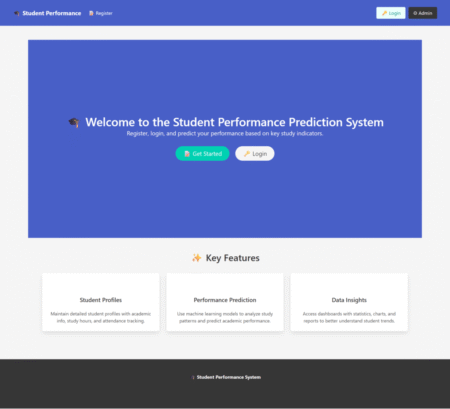
In Java, choosing the right data type is more than just syntax it’s a decision that impacts memory usage, speed, and long-term maintainability. As a statically typed language, Java Data Types are fixed at compile time, meaning the compiler knows exactly what each variable stores. This leads to better performance and fewer runtime errors.
According to Oracle’s official Java documentation, understanding these data types is fundamental for writing efficient and bug-free code.
Why Data Types Matter in Java
The correct data type ensures:
- Memory Efficiency: Using
byteinstead ofintfor small values saves memory. - Performance: Optimized types lead to faster execution.
- Code Clarity: Explicit types improve readability and reduce bugs.
| Factor | Impact |
|---|---|
| Memory Efficiency | Smaller types (e.g., byte) save memory, important in large datasets. |
| Performance | Correct types reduce overhead and improve speed. |
| Code Clarity | Explicit typing makes code easier to read and maintain. |
| Error Prevention | Strong typing catches mismatches at compile time. |
For developers working with enterprise-grade systems or Java Development Company projects, understanding when to use primitive vs. non-primitive types is key to scalable, high-performance applications.
Related post: Top Java Development Companies in 2025 | Best Java Experts
Java Data Type Categories
Java data types are divided into two categories:
- Primitive Data Types – Store simple values directly in memory.
- Non-Primitive (Reference) Data Types – Store references to objects in memory.
| Category | Examples | Storage | Speed |
|---|---|---|---|
| Primitive | int, byte, char, boolean, float, double | Stack | Fast |
| Non-Primitive | String, Arrays, Classes, Interfaces | Heap | Slower |
1. Primitive Data Types in Java
Java provides 8 primitive data types, each optimized for specific kinds of data.
| Type | Size | Default Value | Range | Example |
| boolean | 1 byte* | false | true/false | boolean isJavaFun = true; |
| byte | 1 byte | 0 | -128 to 127 | byte age = 25; |
| short | 2 bytes | 0 | -32,768 to 32,767 | short temp = -200; |
| int | 4 bytes | 0 | -2,147,483,648 to 2,147,483,647 | int population = 2000000; |
| long | 8 bytes | 0L | -9,223,372,036,854,775,808 to 9,223,372,036,854,775,807 | long worldPop = 7800000000L; |
| float | 4 bytes | 0.0f | ~6-7 decimal digits | float pi = 3.14f; |
| double | 8 bytes | 0.0d | ~15-16 decimal digits | double precisePi = 3.141592653589793; |
| char | 2 bytes | ‘u0000’ | 0 to 65,535 (Unicode) | char grade = 'A'; |
Note: Boolean size is JVM-dependent (usually 1 byte).
Example: Using All Primitive Data Types
2. Non-Primitive (Reference) Data Types
Common Non-Primitive Types
| Type | Description | Example |
| String | Sequence of characters, immutable | String name = "Inexture"; |
| Array | Collection of fixed-size elements | int[] numbers = {1, 2, 3}; |
| Class | Blueprint for objects | class Car {} |
| Object | Instance of a class | Car myCar = new Car(); |
| Interface | Contract for implementing classes | interface Animal { void sound(); } |
Example: String and Array
Choosing the Right Data Type
When developing applications whether a Java Caching optimization system or a high-traffic eCommerce backend, the wrong choice of data type can lead to memory waste and performance bottlenecks.
When selecting a data type:
- Use
<strong>byte</strong>or<strong>short</strong>for small integers and memory efficiency. - Use
<strong>int</strong>for most integer operations. - Use
<strong>long</strong>for very large integers (e.g., timestamps). - Use
<strong>float</strong>for low-precision decimal values. - Use
<strong>double</strong>for high-precision decimals. - Use
<strong>boolean</strong>for logical decisions. - Use
<strong>char</strong>for single Unicode characters. - Use non-primitives for complex structures like collections, text processing, and OOP designs.
Common Mistakes to Avoid
- Using large types unnecessarily → Wastes memory.
- Precision errors with
float→ UsedoubleorBigDecimalfor finance. - Forgetting default values → Leads to
NullPointerExceptionin objects. - Using
==for object comparison → Use.equals()instead.
Final Thoughts
Understanding Java Data Types is foundational for every developer. Choosing the right one boosts performance, saves memory, and keeps your code maintainable. Whether building an API, implementing Java Caching, or working with enterprise systems at Inexture Solutions, mastering data types is the first step toward writing efficient Java applications.
The post Java Data Types for High-Performance Coding: A Complete Reference appeared first on Inexture.
Source: Read MoreÂ



